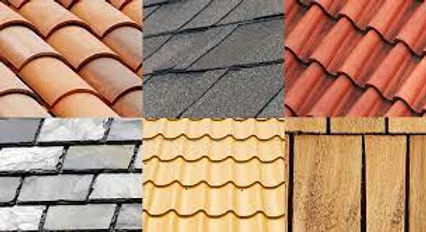Choosing the right roofing material for your home is a critical decision that can impact both aesthetics and functionality. Among the most popular choices are shingle, tile, and metal roofs. Each has its own set of advantages and disadvantages, making it essential to weigh the pros and cons carefully before making your selection. In this blog post, we'll explore the merits and drawbacks of these three roofing options to help you make an informed choice.
Shingle Roofs
Shingle roofs are the most common roofing material in the United States, primarily due to their affordability and versatility. Here are some of the pros and cons of shingle roofs:
Pros:
- Cost-Effective: Asphalt shingles are budget-friendly, making them an attractive choice for homeowners on a tight budget.
- Variety: Shingles come in various colors and styles, allowing for customization to suit your home's aesthetics.
- Easy Installation: Shingle roofs are relatively easy to install, which can reduce labor costs.
- Maintenance: They require minimal maintenance and are easy to repair when damaged.
Cons:
- Lifespan: Shingle roofs have a shorter lifespan compared to other materials, typically lasting 15-30 years, depending on the quality.
- Vulnerable to Weather: Shingles are susceptible to wind, hail, and extreme weather conditions, which can lead to damage and require frequent repairs or replacement.
- Limited Eco-Friendliness: Asphalt shingles are not environmentally friendly, as they are not easily recyclable.
Tile Roofs
Tile roofs, made from materials like clay, concrete, or slate, offer a unique and timeless appearance. Here are their pros and cons:
Pros:
- Aesthetic Appeal: Tile roofs provide a beautiful and elegant look that enhances the curb appeal of a home.
- Durability: Tile roofs are known for their long lifespan, often lasting 50-100 years or more.
- Low Maintenance: They require minimal maintenance and are resistant to rot, insects, and fire.
- Energy Efficiency: Tiles have natural insulating properties that can help regulate indoor temperatures, potentially reducing energy bills.
Cons:
- Weight: Tile roofs are heavy, which may require additional structural support and increase installation costs.
- Cost: The initial cost of tile roofing is higher compared to shingles, which can be a significant investment.
- Fragility: Tiles can break or crack if walked on or subjected to heavy impacts, making repairs more complicated and costly.
Metal Roofs
Metal roofs, often made from steel, aluminum, or copper, have gained popularity in recent years. Let's explore their pros and cons:
Pros:
- Longevity: Metal roofs have an exceptional lifespan, often lasting 40-70 years or more.
- Durability: They are resistant to extreme weather conditions, including hail, wind, and heavy snow.
- Energy Efficiency: Metal reflects heat, reducing cooling costs in hot climates.
- Sustainability: Many metal roofing materials are recyclable, making them an eco-friendly choice.
Cons:
- Cost: The upfront cost of metal roofing can be higher than asphalt shingles, although it can pay off in the long run.
- Noise: Metal roofs can be noisy during heavy rain or hailstorms, which may require additional insulation.
- Expansion and Contraction: Metal expands and contracts with temperature fluctuations, which may lead to potential noise and the need for proper installation.
Conclusion
Choosing between shingle, tile, and metal roofs depends on your budget, aesthetic preferences, climate, and long-term goals. Each roofing material has its own set of advantages and disadvantages. It's crucial to weigh these factors carefully and consult with a roofing professional to determine the best option for your home. Ultimately, the right choice will not only enhance the beauty of your home but also provide protection and peace of mind for years to come.


